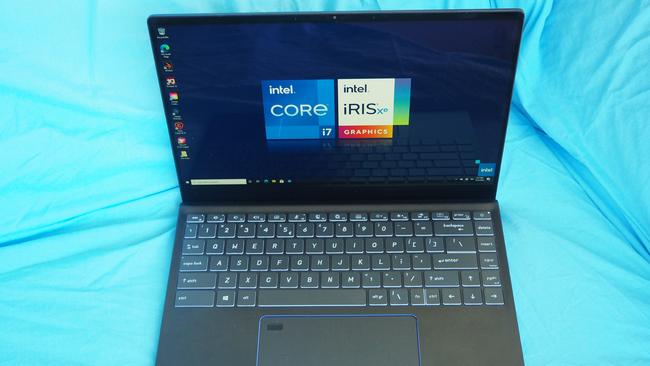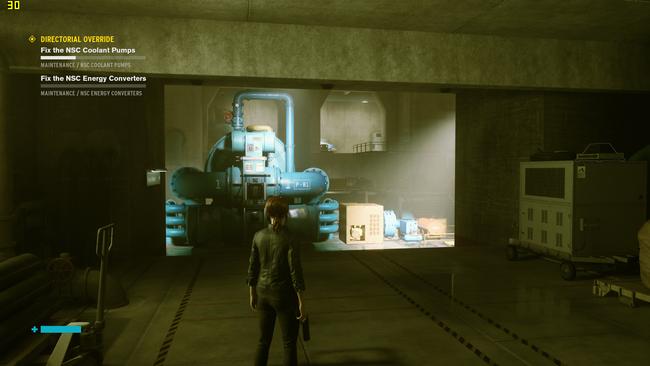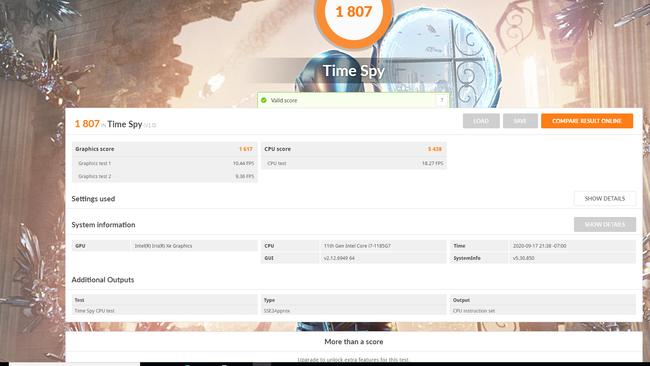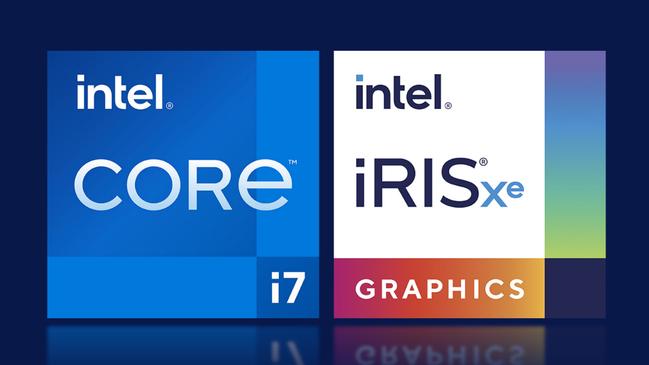Review: Intel 11th gen Tiger Lake processor with Iris XE graphics
Intel’s latest processors with on-board graphics offers some promise for gamers.

Enthusiast gamers always find themselves a little crestfallen when they discover a laptop has integrated graphics rather than a dedicated graphics card.
Modern games tend to be pretty high performance and need a dedicated graphics card – typically from developers Nvidia or AMD – to get the most out of them, or play them at all, in some cases.
GPUs take up quite a bit of space, require a lot of power and increase the price of a unit quite noticeably. A top-end gaming laptop like the Alienware M15 R3 weighs 2.1kg, not including the power brick, and costs around $4000, and they’re overkill for general work – you don’t need a ray tracing-enabled GPU to run Microsoft Word or Gmail, after all.
That’s where “thin and light” laptops come in. By discarding the GPU and keeping the focus on productivity, they’re a lot thinner, lighter, more portable, and have longer battery lives (eight hours-plus instead of two) than a gaming laptop.
The trade-off is they can’t play higher-performance games. However, Intel have been working on something to bridge that gap with their 11th generation core processor, which features Iris XE on-board graphics, theoretically providing many of the benefits of a dedicated GPU without the space, weight or cost issues.

Some scepticism was in order, given the lacklustre history of integrated graphics cards on Intel platforms in the past from a gaming perspective, so it was good to get a chance to test the new chip set for myself.
Intel very kindly lent me a pre-production ‘reference system’ from a well-known OEM manufacturer to test, featuring an 11th generation Intel Core i7-1185G7 processor with Iris XE on-board graphics, a 14-inch 1080p screen, a 1TB SSD and 32Gb of RAM.
Because the unit in question is a reference system – basically a test platform – and not a commercially available product, I am not reviewing things like battery life or ergonomics or design or the build quality or any of the other aspects that go into a full laptop review – the focus is purely on the processor.
I benchmarked the system with 3DMark, a program designed to test a computer’s performance under gaming conditions, as well as running some tests to see how it would handle performing assorted productivity tasks such as photo and video editing and word processing.
I also tested the system with six games – The Outer Worlds, Just Cause 4, Control, Untitled Goose Game and Sid Meier’s Civilisation VI.
These games represent a cross-section of the sort of things an enthusiast gamer might play, with Untitled Goose Game at the less graphically demanding end of the scale and Control at the opposite end of the spectrum. All games were set to 1080p (1920x1080) resolution for testing.

As I expected, Untitled Goose Game ran at a perfect 60fps the whole way through – the game basically does not need hardware rendering at all.
The Outer Worlds performed pretty much as I was expecting – on medium settings, I was getting a solid 45-48 frames per second for indoor game areas and round 35 frames per second in outdoor areas (the outdoor areas in the game are quite large) which is respectable and makes for an acceptable gaming experience
Moving on to Just Cause 4, I was disappointed to discover that even on the lowest settings I was getting about 12-15 frames a second. The game was essentially unplayable, unfortunately.
Next up was Sid Meier’s Civilisation VI, which is turn-based but has rich and vibrant graphics with a lot happening on screen. I was getting a comfortable 45 frames per second there, which is excellent and basically the same experience I would expect on a dedicated gaming computer for this title.
What surprised me were the results from Control, which is well-known as a demanding game performance-wise. I set the resolution to 1080p but had to set all the settings to “low” to get it working effectively, but the result was a completely playable 30-32 frames per second, although it dipped into the mid-20s during some of the more demanding combat sequences. Bumping the settings up to “Medium” caused the frame rate to drop to an unplayable 11 frames per second at best, however.

Again, Control is the sort of game people buy high-end dedicated graphics cards to play properly, so the fact the integrated Iris XE element could run it even remotely playable was pretty impressive to me.
The performance benchmarks were more or less in line with Intel’s figures – 3D Mark’s Fire Strike test recorded an overall score of 5161, against an expected an expected 5245, while the Time Spy test recorded an overall score of 1806 against an expected 1807.
The Night Raid test, designed for systems with integrated graphics cards, recorded an overall score of 18342 against an expected 18525 and did very well in the graphics tests, recording a very smooth 93.12 frames per second in the first test and 121.42 frames per test in the second part.
The productivity tests also performed as expected, but to be honest from my perspective as a reviewer pretty much every laptop in the past 15 years or so has been able to run Microsoft Office and similar programs without missing a beat. The video editing process tests were also in line with Intel’s expected results, too.
Purely from a gaming perspective, the Iris XE is quite a noteworthy development. While you’re not going to get a premium gaming PC experience out of the new chip set alone, what it means is that you won’t be totally locked out of gaming if you go for a thin-and-light laptop without a graphics card either.

There are a mind-boggling number of games out there and while the blockbuster, visually impressive titles get all the attention, there are a huge number of less graphically demanding games the Iris XE will be able to handle quite happily; the games I tested are just a drop in the digital ocean and there are countless other phenomenally popular games like World of Warcraft, Fortnite and Fall Guys that I have no doubt this set up would be able to handle without problems.
While I’ll need to test a commercial production laptop with the chip set in it – and they should be on the market in coming weeks – to give a proper verdict, based on what I’ve seen from these tests the results are extremely promising and it looks like we are finally going to start seeing “work” laptops which can do double duty for light or even mid-range gaming use once the user clocks off for the day too.
My initial thoughts based on my time with the Intel 11th generation core reference system are “don’t go ditching your gaming laptop just yet” – but there’s also some promising elements here too so you won’t necessarily have to despair if work provides you with an appropriately equipped thin-and-light laptop running this new chip set either.


